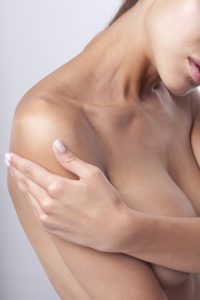 Dermabrasion is a dermatologic treatment that enhances the appearance of the skin. It involves the use of a wire brush or diamond wheel with rough edges (known as a fraise or burr) to eliminate the topmost skin layers.
Dermabrasion is a dermatologic treatment that enhances the appearance of the skin. It involves the use of a wire brush or diamond wheel with rough edges (known as a fraise or burr) to eliminate the topmost skin layers.
The burr or brush spins rapidly, eliminating and leveling (abrading or planing) the uppermost skin layers. This process wounds or injures the skin and causes bleeding. New skin replaces the damaged skin as the wound heals.
Texas Surgical Dermatology, led by board certified dermatologist Dr. Tri H. Nguyen, provides advanced skin care procedures to patients in Houston, Katy, Spring, The Woodlands, Texas, and surrounding locations.
Factors to Determine Skin Removal
Things impacting the depth of skin removal are as follows:
- The coarseness of the burr or brush as well as its spinning speed
- The amount of pressure applied and for how long
- The state and characteristics of the patient’s skin
The most common area for dermabrasion treatment is the face. However, it is an effective treatment for other areas of the body as well. This procedure is often undertaken to enhance the appearance of acne scars and fine lines around the mouth. It may also be used in the treatment of rhinophyma (an enlarged nose) due to a skin condition known as rosacea.
Advantages
Dermabrasion creates a smooth and even skin texture as well as gives scarred skin a more uniform appearance. This is an effective procedure to soften the appearance of surface or almost flat acne scars.
Other types of treatment may be necessary for pitted acne scars along with or rather than dermabrasion. Other type of treatments for such scars includes elevation, punch grafting, or excision.
Dermabrasion may improve scars from surgery or injury when done eight to 12 weeks following the surgery or injury. However, most new scars fade away or heal by themselves for the initial six months or so.
Certain surface growths on the skin can be addressed. However, dermabrasion is rarely used in treating such growths.
This procedure can improve color changes in the skin, especially when undertaken with a bleaching agent and tretinoin (Retin-A). Dermabrasion can improve the efficiency of the bleaching agent.
This procedure will not have a significant impact on deeper wrinkles, but it may bring about improvements in fine lines surrounding the eyes and mouth.
How it is Done
The provider will clean and mark the treatment areas. They will use a local anesthetic (such as lidocaine) to numb the skin. Ice packs may also be placed on the skin for up to 30 minutes.
The provider may use a freezing (cryogenic) spray to harden the skin for deeper abrasions if the ice packs and anesthetic do not tighten the skin adequately.
The patient may require stronger anesthesia, sedation, pain killers, or general anesthesia for deeper abrasions, or if their entire face is undergoing treatment.
The provider will treat one small area at a time. If necessary, they will apply the freezing spray to the face for a few seconds. Subsequently, the rotating brush or burr will eliminate the uppermost layers of the skin.
The provider will use gauze to stop any bleeding and then cover the region with a clean dressing or ointment. This procedure is almost always undertaken in the doctor’s office or on an outpatient basis.
What to Expect
The size and depth of the treated area will determine the time it takes to heal after dermabrasion. A person who has had a full-face treatment will take a longer time to heal in comparison to someone who has undergone treatment in just a small skin area. Abrasions that are deeper take more time to heal.
Board certified dermatologist Dr. Tri H. Nguyen receives patients from Houston, Katy, Spring, The Woodlands, Texas, and nearby areas for skin treatments.
For more information on procedures and treatments offered at Texas Surgical Dermatology PA please call 832.663.6566 or click here to contact our dermatologists. Helping patients in Houston, The Woodlands, Springs, Katy and other surrounding areas of Texas.

